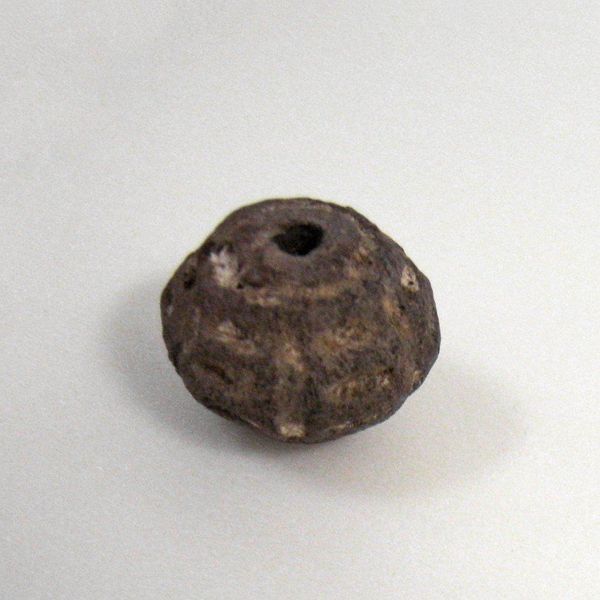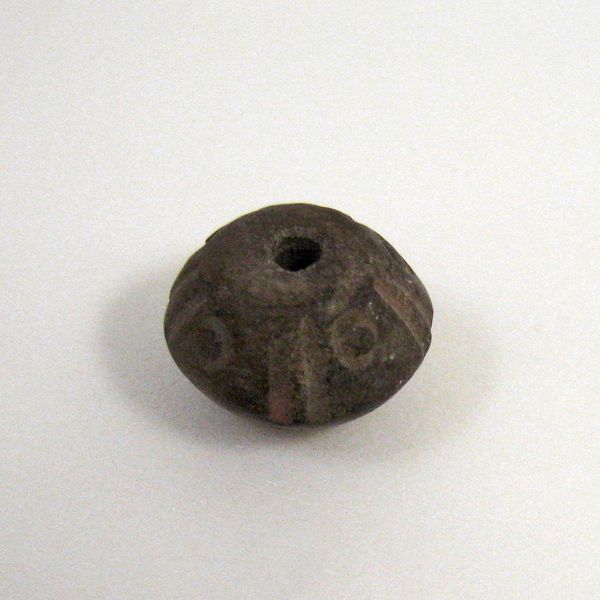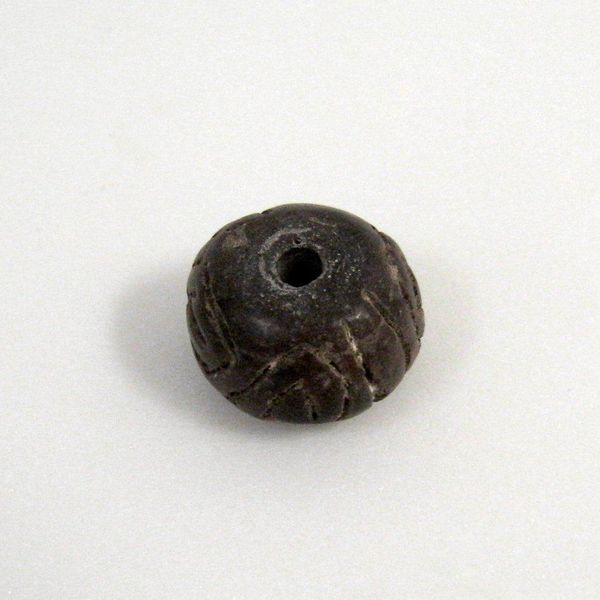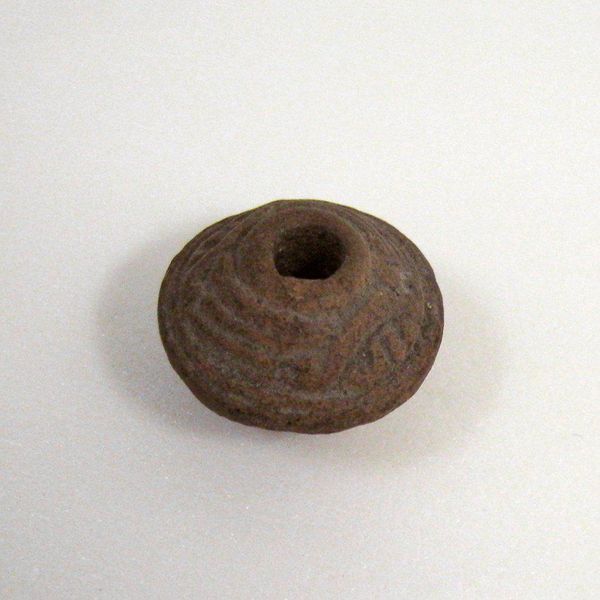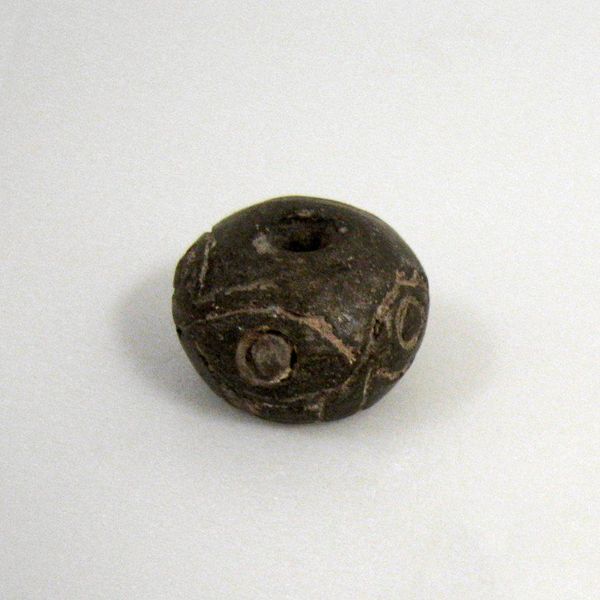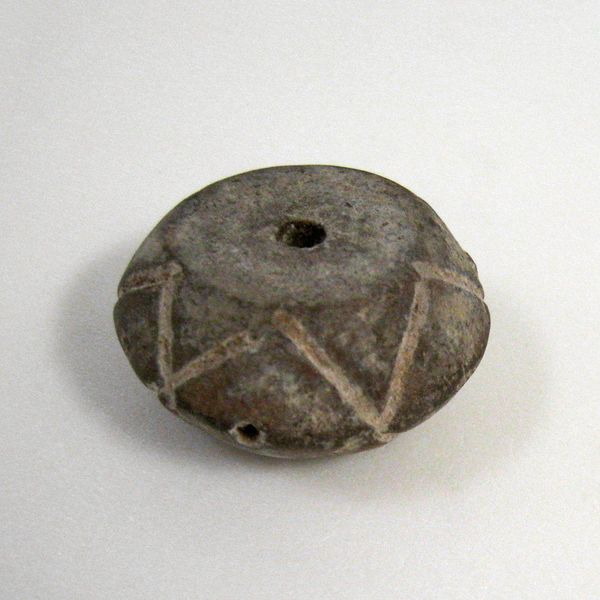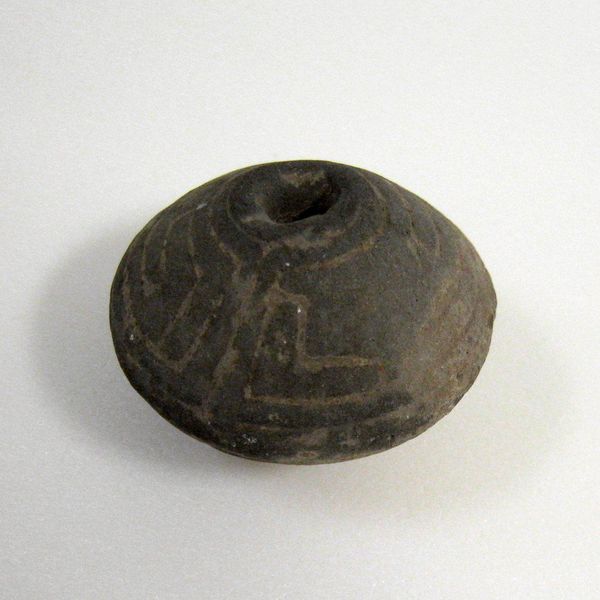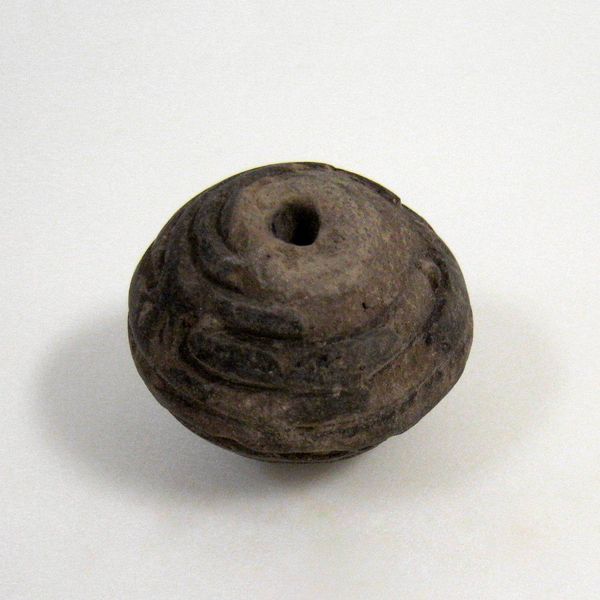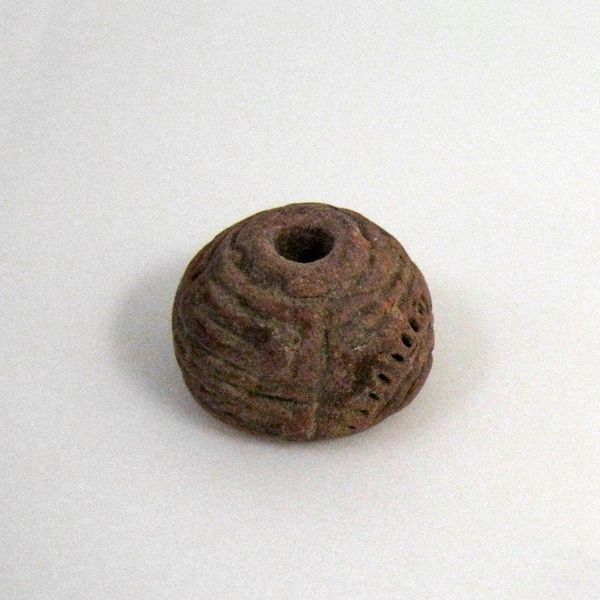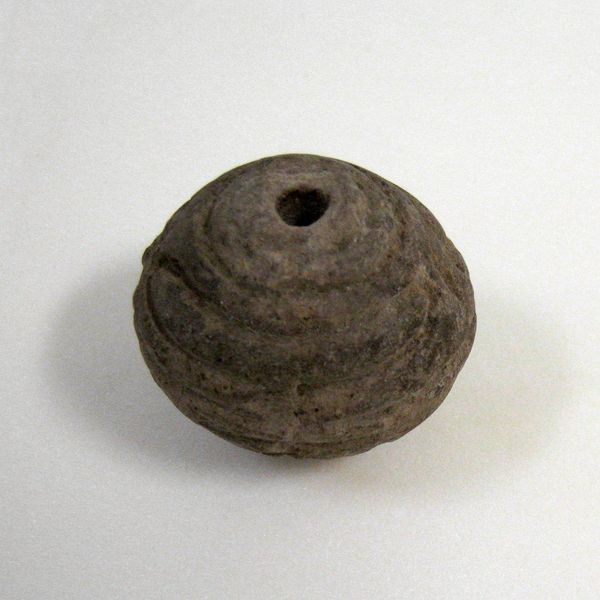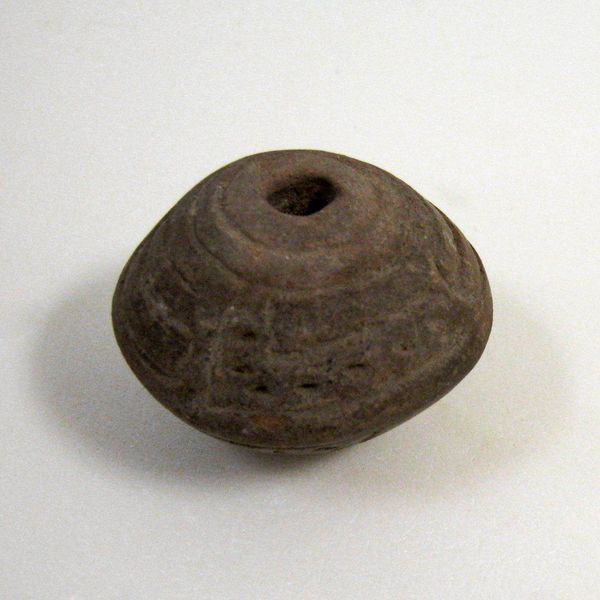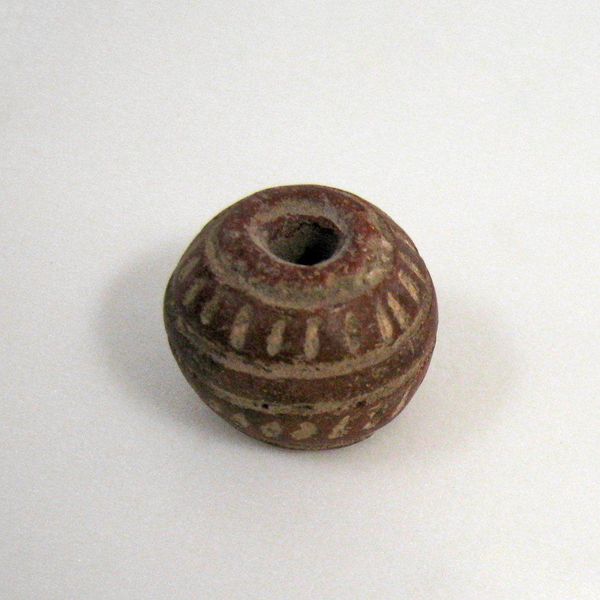
ceramic, earthenware
#
fluid shape
#
3d sculpting
#
3d printed part
#
sculpture
#
ceramic
#
sculptural image
#
unrealistic statue
#
earthenware
#
3d shape
#
sculpting
#
curved surface
#
statue
Dimensions: 5/8 x 7/8 in. (1.59 x 2.22 cm)
Copyright: Public Domain
Curator: Before us, we have a spindle whorl currently held at the Minneapolis Institute of Art. Though its precise date remains unknown, this piece offers a tangible connection to ancient Indigenous American fiber arts. It appears to be crafted from earthenware. Editor: My initial impression is one of understated elegance. The whorl, with its spherical form and central perforation, exudes a sense of groundedness, almost as if it’s a tiny, dense planet. It looks like it feels cool to the touch, even austere. Curator: Indeed. Spindle whorls like this one were integral tools for hand-spinning fibers into thread. Examining the artifact invites reflection upon women's work, particularly their vital roles in textile production across cultures and how, historically, that labor has often been devalued and unacknowledged within broader economies. Editor: Right, but consider also the symbolic weight embedded in what may seem a humble object. Circular forms frequently represent cycles of life, death, and rebirth, as well as wholeness and completion. And, given this whorl’s function, spinning itself is often symbolic of fate, destiny, and the unfolding of time. You could say it also signifies creation; thread becomes cloth, transforming raw material into something beautiful and useful. Curator: I'd also suggest, we think about accessibility and what types of people engaged with the artifact. I am drawn to consider that access to certain material goods such as clothing or certain woven articles may have functioned as a class indicator. I’m intrigued to investigate its discovery—how it came into the museum's collection and the hands through which it has passed. The journey of objects can often reflect power dynamics between different cultures. Editor: Good point. And perhaps the repetitive motion of spinning lent itself to meditative states or even served as a form of embodied prayer—especially if these kinds of visual motifs are consistently included on these whorls. You can almost imagine the artisan imbuing the object, through the application of the pattern, with personal and cultural significance that would continue through touch. Curator: Absolutely, such objects speak volumes about daily practices, economies, belief systems, but equally so, of broader forces. When considered carefully they can even act as agents, not just inert artifacts but vital connections to our collective past. Editor: I agree entirely, I think thinking about how spinning practices and the making of textiles continues today is vital, considering it as not just craft, but an integral part of our lives.
Comments
No comments
Be the first to comment and join the conversation on the ultimate creative platform.
